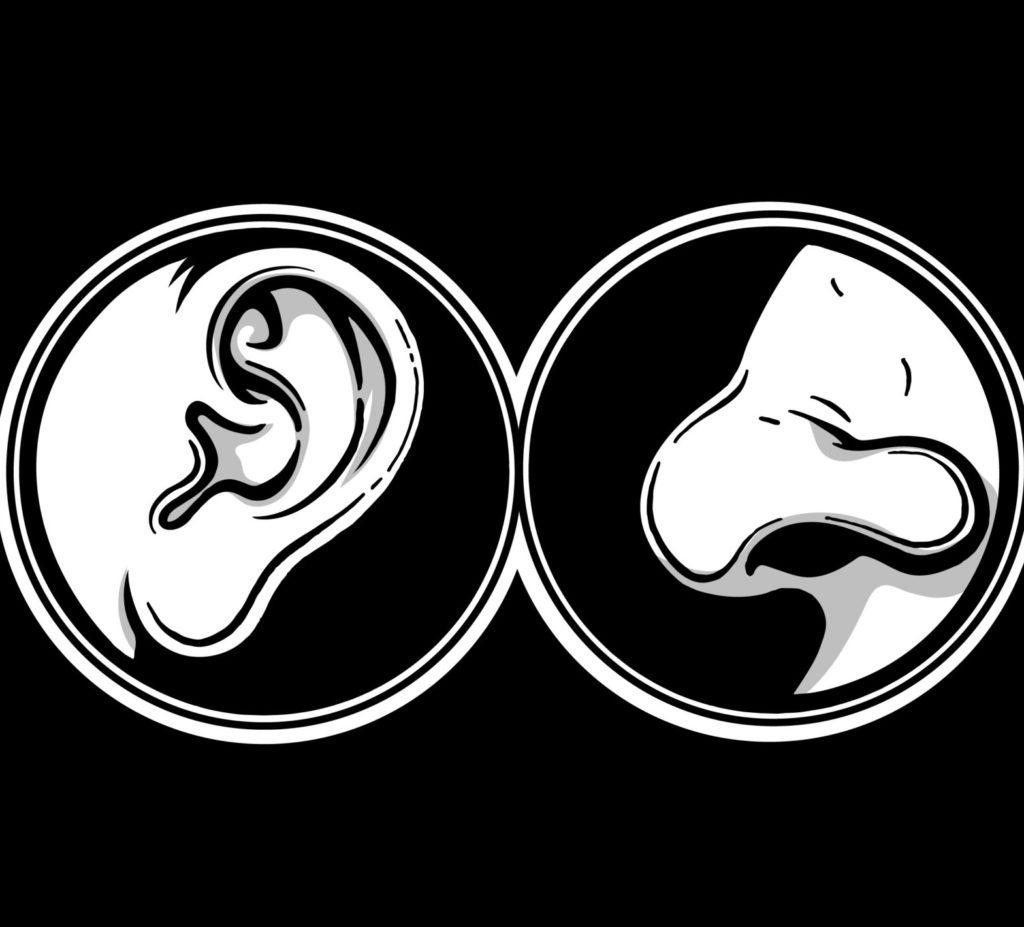Back to: HOME ECONOMICS JSS1
Welcome to class!
In today’s class, we will be talking about the nose and the ear. Enjoy the class!
The Nose and The Ear

The nose is the body’s primary organ of smell and also functions as part of the body’s respiratory system. Air comes into the body through the nose. As it passes over the specialized cells of the olfactory system, the brain recognizes and identifies smells. Hairs in the nose clean the air of foreign particles
The ear is the organ of hearing and, in mammals, balance. In mammals, it is usually described as having three parts—the outer ear, the middle ear and the inner ear. The outer ear consists of the pinna and the ear canal.
The ear is the organ of hearing and balance. The parts of the ear include:
The external or outer ear, consisting of:
- Pinna or auricle: This is the outside part of the ear.
- External auditory canal or tube: This is the tube that connects the outer ear to the inside or middle ear.
- Tympanic membrane(eardrum): The tympanic membrane divides the external ear from the middle ear.
Middle ear (tympanic cavity), consisting of:
Three small bones that are connected and transmit the sound waves to the inner ear. The bones are called:
- Malleus
- Incus
- Stapes
- Eustachian tube: A canal that links the middle ear with the back of the nose. The eustachian tube helps to equalize the pressure in the middle ear. Equalized pressure is needed for the proper transfer of sound waves. The eustachian tube is lined with mucous, just like the inside of the nose and throat.
The inner ear, consisting of:
- This contains the nerves for hearing.
- This contains receptors for balance.
- Semicircular canals: This contains receptors for balance.


How do you hear?
The hearing starts with the outer ear. When a sound is made outside the outer ear, the sound waves, or vibrations, travel down the external auditory canal and strike the eardrum (tympanic membrane). The eardrum vibrates. The vibrations are then passed to 3 tiny bones in the middle ear called the ossicles. The ossicles amplify the sound. They send the sound waves to the inner ear and into the fluid-filled hearing organ (cochlea).
Once the sound waves reach the inner ear, they are converted into electrical impulses. The auditory nerve sends these impulses to the brain. The brain then translates these electrical impulses as sound.
The function of the nose
- Its an organ of smell
- It serves as a channel through which the air we breathe is passed and filtered.
- It contributes to the proper appearance of an individual.
Here are seven surprising facts about your nose:
- Your nose is the main route for breathing. The nose and mouth can serve as the pathway of air entering and exiting the lungs. In normal breathing, the nose is the primary pathway.
- The nose humidifies the air you breathe. The nose processes the air we breathe to prepare it for our lungs and throat, which do not tolerate dry air well.
- Your nose cleans the air you breathe. The air we breathe has all kinds of stuff in it from oxygen and nitrogen to dust, pollution, allergens, smoke, bacterial, viruses, small bugs and countless other things.
- Your nose regulates the temperature of the air you breathe. Just like our throat and lungs do not like dirty air, they do not like air that is too cold or too hot. The passing of the air through the nose allows the air to become more like body temperature.
- Your nose protects you. High in the nose are a large number of nerve cells that detect odours. To smell, the air we breathe needs to be pulled high in the nose so that it can come in contact with these nerves.
- Your nose shapes the sound of your voice. What we hear when people speak and sing is in large part related to the resonating structures of the throat and nose. The voice is produced in the larynx but that sound is really a buzzing sound.
- Your nose helps you find a mate. It’s amazing how many of our body functions are directed toward sexual activity and reproduction. The nose plays a critical role in our perceptions of sex through the olfactory system.
In our next class, we will be talking about the Teeth. We hope you enjoyed the class.
Should you have any further question, feel free to ask in the comment section below and trust us to respond as soon as possible.
